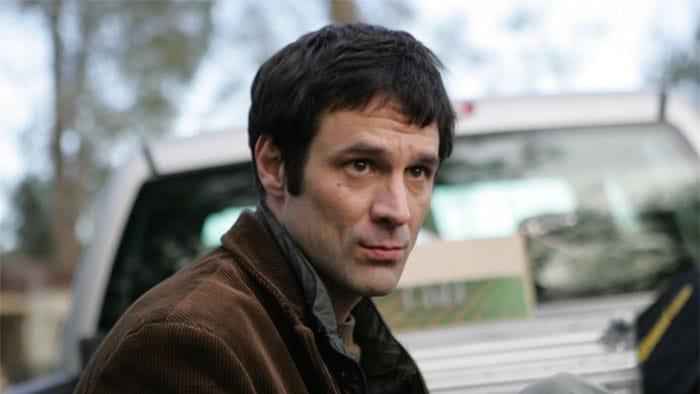
The opening scene of “The Diving Bell and the Butterfly” captures viewers with a breathtaking point-of-view shot, as the frame reveals the blurry, shifting vision of a man waking from a stroke. What sounds like an overly formal cinematic device transforms footage of hospital staff, quickly responding to their waking patient, into melting lines and colors, rupturing and fading. These visuals throw us into ecstatic aerial somersaults, even if the experience revealed is terrifying. Here begins a work of dynamic visual art, at once narrative driven and sublimely abstract.
This French film’s subject, based on the real-life ordeal of Jean-Dominque Bauby (realized by Mathieu Amalric), finds himself a victim of “locked in syndrome.” Though he retains cognitive function (due to damage to the brain stem and not the upper portions of the brain) in his paralysis, he has lost his speech faculty, revealed through thoughts in voice-over that will not materialize into spoken words. As he struggles to communicate, and lies stagnant with a flurry of emotions within, director Julian Schnabel grabs hold of his viewers’ senses and suggests the panic we’d feel if we lost all but our vision. Bauby’s only physical movement appears in his eyes, until his right eye submits to his overall paralysis and must be sewn shut, as the frame is swallowed when a thread pierces and locks his eyelid.
“Jean-Do, ” as this 43-year-old editor of the French Elle is affectionately called, is served brisk attempts at rehabilitation. Irony comes when we learn that the rehab will be administered by three gorgeous women – the kind that the former able-bodied Jean-Do could charm within minutes of meeting. This ex-ladykiller, who now eats through a feeding tube, compares himself to something out of a “formaldehyde jar” when he catches a glimpse of himself in a passing mirror. If these women are reverential to his popular status, they are doubly committed to reviving as much vitality from him as they can. He soon makes a special bond with Henriette (Marie-Josée Croze), his empathetic speech therapist. To help him communicate, she repeats a sequence of letters in order of frequency of use in French, from which he chooses by blinking his one eye; thus he spells out words, one character at a time.
With his communication slowed to a game of catch – and our fears of a sluggish narrative pace arising – his mind breaks away from the restraints of his body, and we are welcomed to hop aboard. Through flashbacks and subjective imagery, the film illustrates Bauby’s multiform inspiration that he never found during the pizazz of his former life. Even when director Schnabel and screenwriter Ron Harwood (Oscar-winner for Polanski’s “The Pianist”) leave Jean-Do’s perspective, where Amalric shines in an uncanny performance, our point of view remains fixed to the main character’s. Bauby’s inspiration comes from almost anywhere, as he muses on the history of his hospital or visualizes a meal of decadent foods that are sweeter than when he could taste them. Through the powerful execution of Schnabel and cinematographer Janusz Kaminski, we are rapt with Bauby’s highs and sorrows as he releases from his repressive “diving bell” and lets fly with the spirit of a butterfly.
Though this is a tragedy of a man who crumbles under sickness, the film celebrates the ecstasy that helped Bauby bear witness in his memoir. While “The Diving Bell” is based on Bauby’s elegant, well-wrought words, Schnabel’s film is so steeped in the visual that it is surely the purest of cinema.
